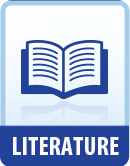|
This section contains 3,462 words (approx. 12 pages at 300 words per page) |

|
SOURCE: "Hans Christian Andersen and the European Literary Tradition," in Hans Christian Andersen: Danish Writer and Citizen of the World, edited by Sven Hakon Rossel, Rodopi, 1996, pp. 209-56.
In the following excerpt, Kofoed discusses Andersen's sources and the double nature of his narrative voice, which expresses "the tension between the manners of the highly educated, adult person and the spontaneity of the child as a representative of unconscious life."
The sources of Andersen's tales and stories are manifold. First of all there is the anonymous folktale; next there is the German literary tale by writers such as Tieck, Arnim, Brentano, Chamisso, and Hoffmann, which had flourished throughout the romantic period; furthermore Andersen's own life story, and finally modern technology and natural science, a source pointed out by one of his closest friends, the physicist Hans Christian Ørsted. In his tales and stories Andersen exploits the entire treasure trove...
|
This section contains 3,462 words (approx. 12 pages at 300 words per page) |

|


